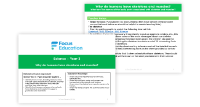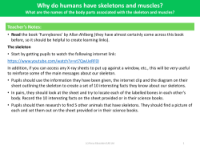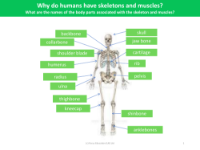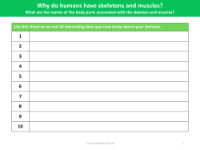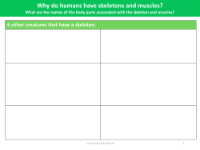What are the names of the body parts associated with skeleton and muscles? - Presentation

Science Resource Description
In the Year 3 curriculum for science, pupils delve into the fascinating world of the human body, specifically focusing on the skeletal and muscular systems. They learn why humans possess skeletons and muscles, exploring the various body parts associated with these systems. The skeleton, composed of bones that grow as we do, serves as the body's supportive framework. It offers protection for vital organs, with the skull safeguarding the brain and the ribs forming a protective cage around the heart and lungs. The spine, or backbone, is a sturdy, flexible column that extends from the skull down to the pelvis.
Muscles, which are attached to bones by tendons, facilitate movement and are crucial for the body's overall function. Joints, where bones meet, enable the body to perform a wide range of movements. Cartilage, a type of connective tissue, is found in these joints, providing cushioning and support, particularly in areas like the elbows. Understanding the names and functions of these parts is essential for students, as it helps them comprehend how nutrients, water, and oxygen are transported within the body. Additionally, the curriculum emphasizes the importance of a nutritious, balanced diet and regular exercise for maintaining a healthy skeletal and muscular system.

